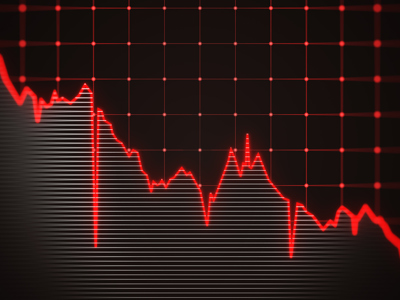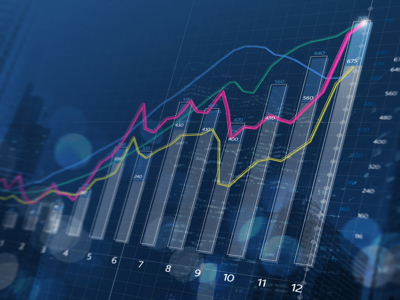From euphoria to unease
The optimism that powered markets into the start of 2025 has given way to a more sobering reality. Since mid-February, markets have been on the back foot, weighed down by President Trump’s aggressive trade policies and mounting signs of economic fragility. After an initial honeymoon period following his re-election, investors are now grappling with the practical implications of his tariff-heavy agenda, as well as the growing cracks in the US economy.
The result? A brutal stretch for risk assets. The S&P 500 has slumped 5% since mid-February, the Nasdaq has shed nearly 10%, and US small caps—caught in the crossfire of Trump’s ‘America First’ policies—have fallen by 9% year-to-date. While European equities have remained resilient in 2025, uncertainty surrounding trade has weighed on export-focused sectors, particularly autos and industrials. Meanwhile, Australian shares have sagged alongside slumping commodity prices.
The Trump trade hits a snag
When Trump stormed back into the White House, markets embraced his pro-growth rhetoric, sending share markets surging and the US dollar soaring. The thinking was simple—lower corporate taxes, reduced regulation, and massive fiscal stimulus would keep the economy churning. But the flip side of the equation—the hardline stance on trade—was always lurking in the background, and it’s now front and centre.
Tariffs are effectively a tax on businesses and consumers, and the latest round has introduced a new layer of uncertainty into an already jittery market. While the exemptions on Canadian and Mexican imports provided short-term relief, businesses remain on edge. Manufacturing data tells the story—new orders for US factories have plunged into contraction territory, with the ISM Manufacturing PMI falling from 55.1% to 48.6%, its weakest reading in over a year.
The services sector, long the engine of the US economy, is faring better, but cracks are forming. The ISM Services PMI remains in expansion at 53.5%, but businesses are growing increasingly anxious about tariffs and potential federal spending cuts. Meanwhile, consumer confidence is starting to wobble—higher prices, weaker job growth, and lingering inflation pressures are beginning to take their toll.
Bonds flash a warning signal
The bond market is often a good indicator of investor sentiment, and right now, it’s signalling caution. US 10-year Treasury yields, having previously climbed to 4.7%, have declined precipitously to 4.3%. This reflects growing concerns about inflation, stalling growth and uncertainty over Federal Reserve (the Fed) policy.
At the start of 2025, markets had priced in multiple interest rate cuts. But the Fed has taken a more measured approach, with Chair Jerome Powell emphasising the need for clarity before making any moves.
Aussie dollar and commodities take a hit
The turbulence in global markets hasn’t been kind to Australia, with the ASX 200 sliding 7.5% over the past three weeks as escalating US tariffs, weaker commodity prices, and concerns over China’s economic slowdown weigh on sentiment.
China’s economy remains on shaky ground, and the renewed trade war risks exacerbating its slowdown. Beijing has set a 5% growth target for 2025, but many analysts question whether it’s achievable given the drag from weak exports and an ongoing property market slump. The iron ore price has slipped 8% since mid-February, putting pressure on Australian miners and further dampening the AUD.
Where to from here?
The road ahead is looking bumpier than it did just a couple of months ago. Markets that were previously pricing in a Goldilocks scenario—resilient growth, moderating inflation, and Fed rate cuts—are now reassessing their expectations.
Trump’s trade policies will remain a wildcard, and while they might not derail the US economy outright, they add to the risk of slower growth and persistently high inflation, reinforcing the case for higher-for-longer interest rates. A more hesitant Fed, tightening financial conditions, and ongoing geopolitical uncertainties raise the likelihood of further market turbulence.
Against this backdrop, our portfolio positioning remains anchored in diversification, higher quality and selective risk-taking.
- Fixed Income: Overweight to high-quality corporate debt and a modest underweight to government bonds.
- Shares allocations: Our shares allocations tilt towards managers focused on quality, favouring companies with pricing power and defensive growth characteristics that can withstand margin pressure from tariffs and higher labour costs.
- Australian and Global Mid & Small Caps shares also remain compelling given their underperformance and attractive valuations, though trade uncertainty means active management and focus on quality is critical.
- Liquid Alternatives: Managed futures offer a valuable hedge in downward-trending markets, providing diversification and downside protection when traditional assets struggle. Their ability to capitalise on market trends—both long and short—allows them to adapt to shifting conditions, making them particularly effective during periods of heightened volatility.
For now, we’re maintaining a cautious but opportunistic stance. If growth holds up, select risk assets— especially in areas that have been oversold — could stabilise. But if the economic weakness deepens, we are well-positioned with higher quality share and credit exposures, and liquid alternatives that provide downside protection.




